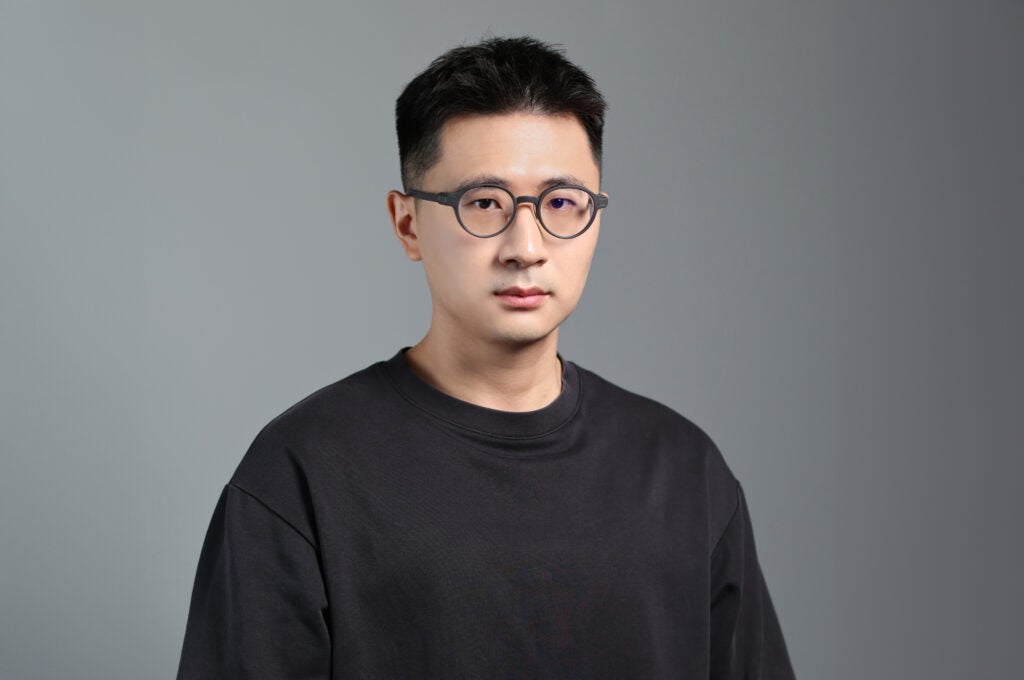
In a fast-evolving landscape where tech giants race to outdo each other with feature-heavy AI and AR glasses, Shenzhen-based startup Even Realities is taking a bold, minimalist stance. Founded in 2023 by industry veteran Will Wang, Even Realities focuses on what truly matters: comfort, simplicity, and essential functionality. The company’s debut product, Even G1, is a lightweight digital eyewear that forgoes cameras and onboard audio, instead offering intuitive, heads-up information like notifications and translations—blending effortlessly into daily life.
At the helm is Will Wang, CEO & Founder of Even Realities, whose deep experience spans Apple, Anker, Oppo, and JMGO. A driving force behind the development of the iPhone, Apple Watch, and revolutionary smart projectors, Will brings a rare combination of design vision and manufacturing expertise. Now, with Even Realities, he is blending traditional eyewear craftsmanship with cutting-edge consumer tech to deliver a new standard in digital eyewear—one that is elegant, practical, and ready for real-world use.
In this interview with Benzinga, Will shares his journey, vision, and why he believes less can truly be more in the future of wearable technology.
What key leadership lessons have you carried from Apple to Even Realities?
Many Chinese companies tend to follow a competition-driven approach. They identify a successful product in the market—like the iPhone—and aim to build a cheaper or more powerful version of it, setting it as their benchmark. From my experience at Apple, the key is to focus on the fundamentals: understanding why people truly need the product, rather than simply reacting to what’s already out there.
In the smart eyewear industry, for instance, many companies look at Meta as the market leader and try to replicate or improve upon what they’re doing. However, the real question is: is that the right approach for the customer? Instead of just focusing on competition, it’s crucial to define your own product by going back to the fundamentals—identifying what truly solves the customer’s needs and delivering an experience that meets those needs in the best possible way.
What inspired you to merge traditional eyewear with advanced tech?
When it comes to smart glasses, the foundation should be a great pair of traditional eyewear—something people actually want to wear daily. If the glasses aren’t comfortable, stylish, or practical without being powered on, they won’t succeed. Many earlier attempts, like Google Glass, failed because they ignored these fundamentals—people didn’t feel comfortable or natural wearing them.
Some newer products, like Meta’s Ray-Ban glasses, are closer, but they still have limitations. Ray-Ban focuses on sunglasses, not everyday prescription wear, and features like built-in cameras raise privacy concerns. For smart glasses to truly work, they must look and feel like regular eyewear—while quietly adding useful tech features.
How is innovating in eyewear different from your work in smart projectors?
The core technology behind our smart glasses is deeply rooted in optical display systems—similar to those used in projectors. What we’re essentially building is a miniaturized projector, using micro projectors and waveguide displays to create a private, high-resolution visual experience that only the wearer can see. This concept draws heavily from our previous experience in designing smart projectors, and much of the knowledge around optical design, supply chain management, and component engineering has carried over.
What sets this apart, though, is the challenge of miniaturization. With projectors for home use, there’s more flexibility—size and weight aren’t critical. But with wearable tech, especially something that sits on your face, every millimetre and every gram makes a difference. That pushed us to refine the technology down to its smallest, lightest, and most efficient form—without sacrificing display sharpness or performance.
This is where our experience really paid off, allowing us to develop what we believe is one of the most advanced and compact micro-display technologies in the market today—enabling a product that feels natural to wear while still delivering a powerful visual experience.
How does your design approach at Even Realities differ from Apple or Oppo?
While Google was among the first to introduce the concept with Google Glass, they didn’t fully respect the fundamentals of the traditional eyewear industry. They reimagined glasses through a tech-first lens but overlooked key elements like design, fit, and the importance of prescription integration.
Eyewear has centuries of history, and experienced designers know which shapes suit different face types. That knowledge can’t be ignored if you want people to actually wear your product. For most users, glasses are first and foremost a prescription tool—so if you’re adding a display, it must coexist seamlessly with prescription lenses. That’s an area where earlier attempts fell short, and it’s something we’ve worked hard to get right.
Which user segments are you targeting first, and why?
Right now we actually have two user groups. One is still the tech enthusiasts. Obviously, they like new tech and they see new tech products coming out with the state-of-the-art technology. They are the first ones to get it and to try it out.
But the second, actually bigger audience for us that are purchasing our product, they are actually top working professionals. They could be company executives. They could be doctors. They could be lawyers. They could be professors, college professors. They are actually more and more people like them using our product. Because at the end of the day, this is actually not a gadget for fun. It’s actually a working tool.
There’s one feature that got added a couple months ago based on requests from the people. With our glasses, you actually can turn the transcription down and then you actually can see the subtitle.
How are you leveraging your supply chain and design experience to scale?
A successful hardware business depends heavily on supply chain management—something often overlooked. My background is in mechanical engineering and operations research, and I started my career managing supply chains at Apple. One key lesson is choosing the right vendors at the right stage of growth—there’s no one-size-fits-all solution.
Strategic, long-term relationships with key vendors are crucial, especially for innovation. When we developed our first product, we faced major challenges with light pass-through in lenses. Most were below 80%, while top-quality lenses like Zeiss or Essilor exceed 98%. We aimed to match that level, despite adding multiple functional layers. By carefully selecting materials, coatings, and optical designs, we solved the issue—layer by layer.
When did you launch the product, and what’s the current market value, expansion plan, and break-even outlook?
The company was founded in September 2023, and we launched our product in August last year. Thanks to a strong team of industry veterans from Apple, Samsung, and Microsoft, we went from concept to market quickly. Since launch, demand has exceeded expectations—driven in part by influential users who’ve become unofficial ambassadors.
Sales have been strong across Europe and North America, with recent expansion into Asia, including Hong Kong and Singapore. Most sales come directly from our website, while offline retail is focused on top-tier optician shops—about 300 across Europe.
We’re committed to staying ahead in innovation, with a strong product roadmap. A new version is coming later this year, followed by a third-generation release next year. Our goal is to bridge the gap between the digital and real world, addressing the imbalance many feel with current tech.
And we think making a pair of smart eyewear, that’s the perfect way to regain the balance for physical and digital. To help you keep your eyes still on the real world while still being able to absorb the information digitally. So that comes giving them even realities. To find the balance point for physical and digital realities and make both realities even.

